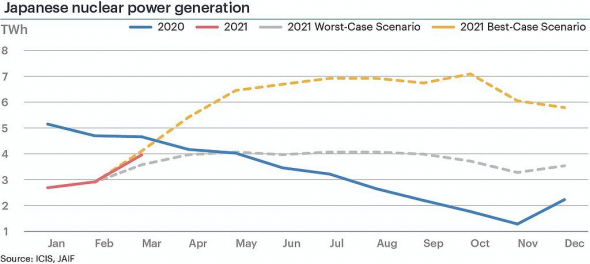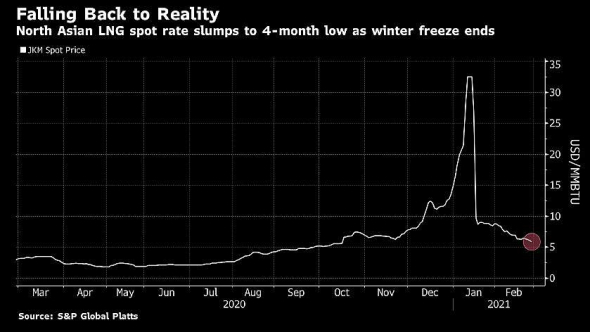КАТАР УСКОРЕННЫМИ ТЕМПАМИ ПЫТАЕТСЯ ЗАКЛЮЧАТЬ КОНТРАКТЫ НА ПОСТАВКУ СПГ СО СВОИХ НОВЫХ ПРОЕКТОВ...
И ЭТО ВСЁ ПРОИСХОДИТ В УСЛОВИЯХ ЖЕСТОЧАЙШЕЙ КОНКУРЕНЦИИ СО СТОРОНЫ США И АВСТРАЛИИ
ДО КОНЦА ДЕСЯТИЛЕТИИ ПЛАНИРУЕТ УВЕЛИЧИТЬ ЕЖЕГОДНЫЙ ОБЪЕМ ПРОИЗВОДСТВА НА 49 МЛН ТОНН (ЭКСПОРТ СПГ ИЗ РОССИИ В 2020 ГОДУ СОСТАВИЛ 29,4 МЛН ТОНН)
The LNG King Embarks on Sales Campaign After Approving Expansion (https://www.bloomberg.com/news/articles/2021-03-03/the-lng-king-embarks-on-sales-campaign-after-approving-expansion)
Executives from the top exporter of liquefied natural gas are jetting around the globe in a whirlwind bid to strike competitive deals with the fastest growing customers. They need to.
Qatar, the world’s largest producer of the fuel, last month approved a $29 billion plan to boost capacity at its LNG export facility by 64% this decade, and is now urgently seeking to lock-in contracts and undercut rival developers from the U.S. to Australia.
That’s why Qatar Petroleum executives were last week in Pakistan to sign a supply deal and pose for photos with Prime Minister Imran Khan, a few days earlier the nation announced an agreement with a trading house for supply to Bangladesh.
“Just in the last week or so we signed a couple of contracts and we’re working on many more,” Qatar Energy Minister Saad Al-Kaabi said at the CERAWeek by IHS Markit conference on March 2.
In the rush to ink deals, Qatar agreed to rates well below those they were demanding less than a decade ago. Pakistan’s latest contract is at a 10.2% link to oil prices, compared to 13.37% in 2016. The Bangladesh deal was done below the 11% mark, according to traders, who requested anonymity to discuss private details.
It is also no coincidence that the first deals out of the gate were for LNG delivered to South Asia, where Royal Dutch Shell expects demand to triple through 2040, out-pacing the rest of the world. Pakistan, Bangladesh and India will need LNG to supplement declining domestic production and to meet growing demand from the industrial and power sectors, Maarten Wetselaar, integrated gas and new energies director at Shell, said in a presentation of the outlook last week.
Still, these agreements just cover a tiny portion of Qatar’s plan to increase annual output by 49 million ton per year by the end of the decade.
The Persian Gulf state benefits from being able to produce LNG at a cost lower than most competitors, with the first phase of the expansion viable even if oil prices fall below $20 a barrel. Brent crude closed at $62.70 on Tuesday.
Qatar is also preparing to ramp up exports to Europe. Qatar Petroleum has booked capacity at units that turn LNG back into gas in Belgium, France and the U.K.
























